A groundbreaking seven -year experiment has yielded new insights into what consciousness creates. The study, in which human participants are involved and published In nature, the fundamental question investigated how our mind becomes aware.
Integrated Information Theory (IIT) suggests that consciousness arises when information within a system, just like our brains, is strongly connected and functions as a united whole. Think of it as a perfectly synchronized orchestra – all instruments that play together create a single, conscious experience.
Global neuronal workspace theory (GNWT), on the other hand, suggests that specific brain areas behave like spotlights, emphasize important information and broadcast them about the brain, making us aware of it. Imagine that a news bulletin is broadcast on a large scale, so that everyone knows.
Researchers have put these two theories to the test. Their findings indicate a strong connection between the visual processing areas of the brain (at the back) and the frontal areas (involved in thinking). This suggests that our conscious experience may be more rooted in how we perceive the world through our senses instead of just in thinking at a higher level.
As Christof Koch, Ph.D., of the all Institute, stated“Adversarial cooperation fits within the mission of the all Institute of team science, open science and great science, in the service of one of the greatest and most long-term, intellectual challenges of humanity: the problem of the spirit-body. This mystery is unraveling is the passion of my whole life.”
The research means that although the front of the brain is crucial for reasoning and planning (“intelligence is about doing”), consciousness (“consciousness is about being”) can trust strongly on how our brain processes sensory input.
The study also showed that the back of the brain seems vital to hold on to the specific details of what we see, such as the orientation of an object.
Although the front of the brain is involved in recognizing the general category of an object, this may not be the primary storage for all fine visual details. This challenges the idea that the front brain area contains all the details of our visual experiences.
These discoveries have important implications for understanding consciousness and can offer new perspectives on disorders such as coma’s and vegetative situations.
Identifying the brain areas associated with consciousness can help doctors to detect “secret consciousness” – hidden consciousness – in non -responding patients with severe brain injury, a condition reported in about 25% of such cases.
Although IIT suggests that consciousness comes from the different parts of the brain that collaborate to integrate information such as a team, the study did not find enough consistent connections in the back of the brain to fully support this. Similarly, although GNWT states that consciousness comes from the brain, the findings did not provide strong enough evidence for this idea.
Anil Seth, Ph.D., from the University of Sussex, noted: “It was clear that no experiment would decide both theories. The theories are simply too different in their assumptions and explanatory goals, and the available experimental methods too coarse, to make another theory pass. Information about visual experience can be decoded.”
The study included an unprecedented 256 participants, who were shown various visual stimuli, while their brain activity was measured with the help of techniques that follow bloodstream, magnetic and electrical activity.
Koch emphasized the power of this approach: “Adversarial collaborations are a powerful social process, little used because of their challenging nature, who wanted to coordinate the research and associated protocols in many, independent laboratories and competing individuals and the bio-medical field can enormously profit through more such ‘friendly’ competition between the Theories neuro-neuro’s neuro-neuro’s neuro-neuro’s neuro-neuro’s neuro’s neuro’s neuro-neurobiological or others.





